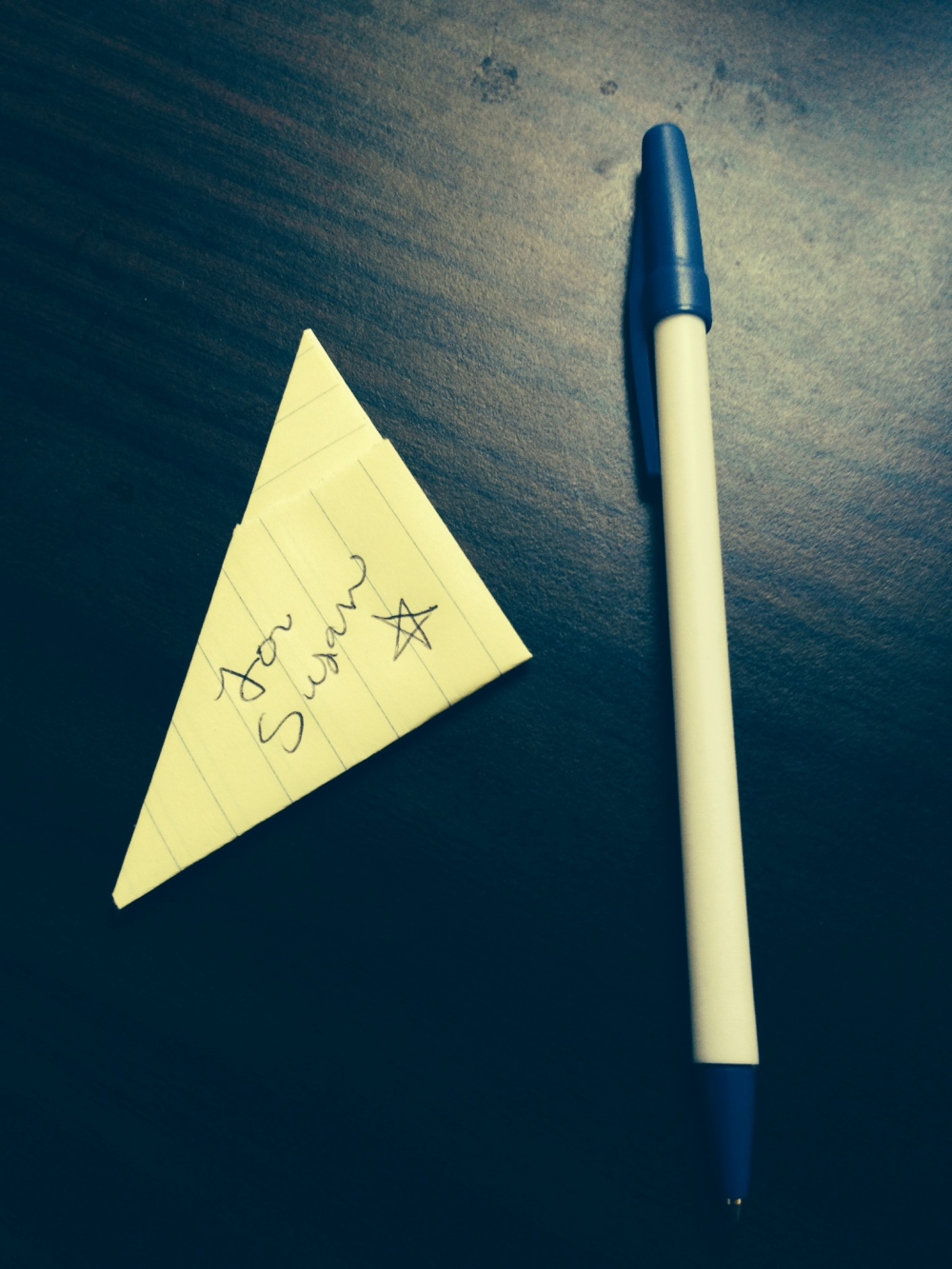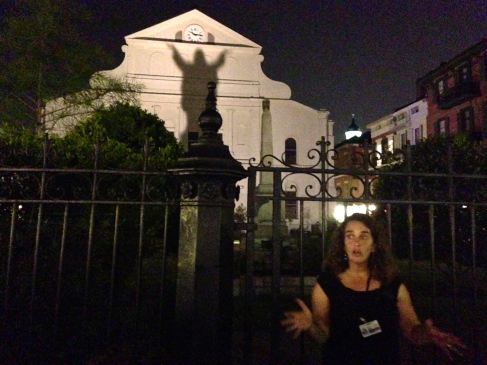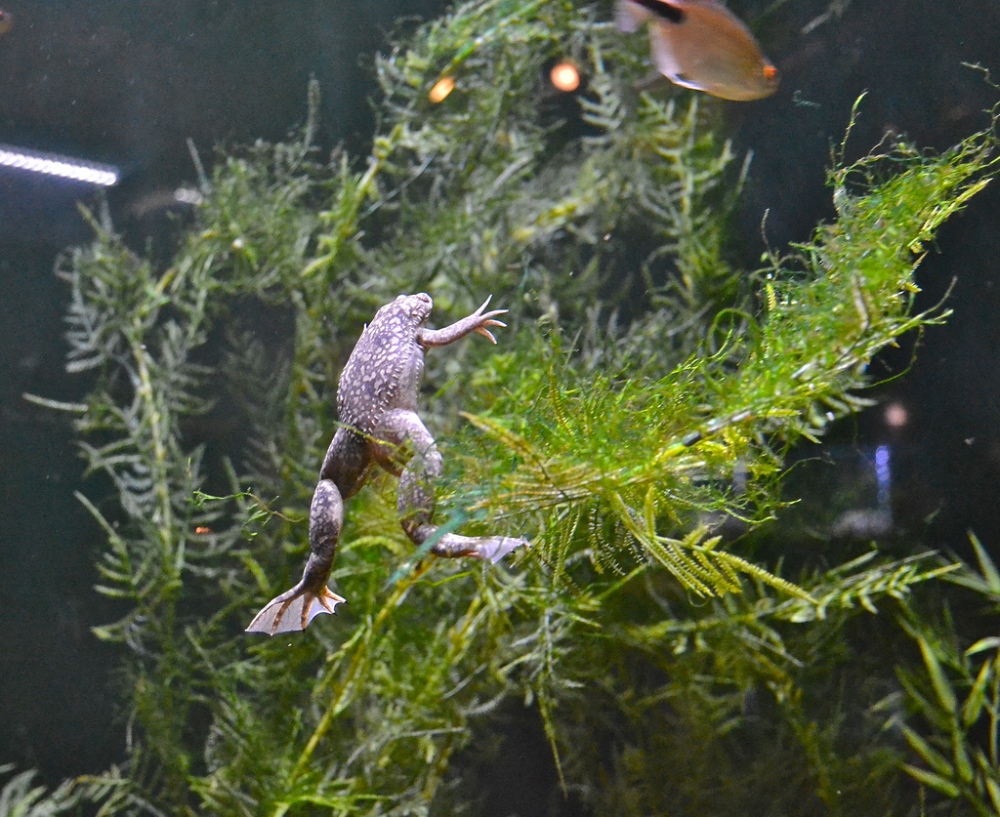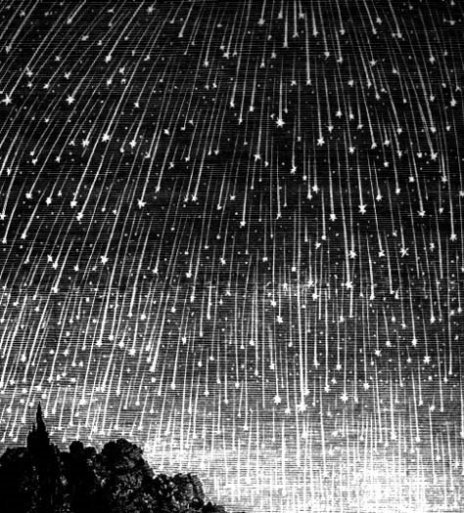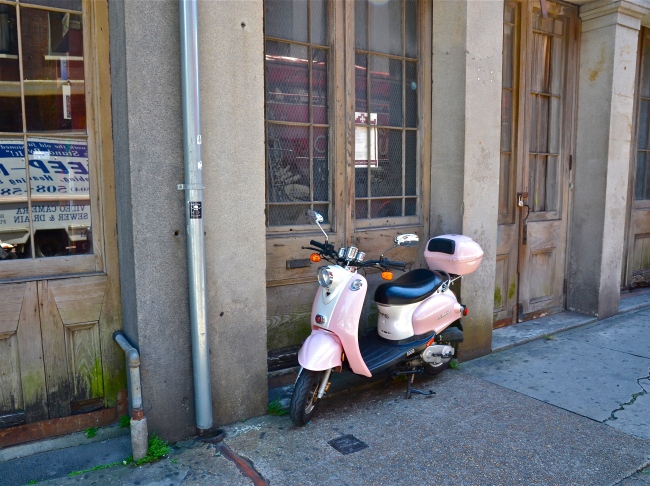
My introduction to the Big Easy occurred during a cross-country drive in 1988 that a grad school friend of mine, Kieran Suckling, and I were making while on winter break from Stony Brook, where we were both in the philosophy doctoral program. Because of the weather we deliberately took a southernly route, driving down I-95 until we hooked up with the I-10. The day we approached New Orleans from Mississippi was a few days before Christmas when a torrential rain hit. I had never seen anything like it before and was a little intimidated as we crawled across what seemed like a never-ending expansion bridge. Eventually we made it, slept in my friend’s Subaru station wagon at the first rest area we spotted, then hit the French Quarter later that evening. We found ourselves first in Jackson Square, which was active with street performers and tourists. While talking with a rotund folk singer strumming an acoustic guitar, one of his friends came along–a slender man with wild but friendly eyes–who told us about the “secret global society of two billion people that ran everything.” From there we walked to Bourbon Street. My first time. I was blown away by how crowded the street was, especially since it was the middle of the week. I remember having to stand on the sidewalk to listen to the bands rockin’ it in the bars along the way. The joints were so packed, there was no way of getting inside! Eventually, after having our fun, we needed to find a place to sleep. We were broke students, so hotels were out of the question. All we had was some camping gear, which we would use at camp sites up and down our long drive. However, here in the middle of New Orleans, we had no idea where to find the nearest camp site. This was 1988–no internet, no smart phones, no GPS, no asking Siri anything, man. Cruising the streets in the Subaru, we found a public park, where we saw some street people hanging out. “This looks good,” we thought. Think again. After napping for less than an hour, the bright lights from a patrol car were giving us a rude awakening. Time to go. After trying another park with the same results, we started easing our way west out of town. We were dead tired, though, so no way were we going to try to hit the freeway. Instead, we came across a suburban area, which seemed on the deserted side. Signs of ongoing housing construction were here and there. We finally parked in a secluded spot surrounded by tall grass and bushes. I chose to sleep in the back of the wagon with the rear door open, so my feet could hang out. Kieran opted to take his sleeping bag and find a patch of flat turf a few feet away in front of the car. Finally, sleep. A few hours of peace until I heard an engine noise. I kept my eyes shut, the noise got louder. I assumed it was the construction workers coming in for the day. No problem, we weren’t anywhere near their work sites. Just then I felt the car shaking. “What the hell?” Kept my eyes closed. The car shook again, harder. When I opened my eyes I saw a policeman looking at me with a perplexed expression. Seeing the startled look on my face, the officer asked me, “What are you doing here?” I jumped out of the back of the wagon. “Can I see some ID?” As I reached for my wallet, I tried answering the officer’s first question. But my words were all garbled. I sounded like that kid from Fat Albert, you know, the one that had that beanie pulled down to his chin! As I struggled to speak, I could feel my lower lip had become swollen. Mosquito bites! For crying out loud. With some effort I managed to say clearly enough, as I handed over my driver’s license, that “My friend and I were just trying to get some rest before hitting the road to Arizona again.” “Your friend? Where’s he at?” I pointed to where Kieran was laying in the middle of some high reeds. “Over there? Where all the snakes are?” Jesus. After all the commotion, Kieran finally got up to see what was going on. When he stood by me, I looked at his face, which was covered in red spots. “What happened to your face?” I asked, wondering what the heck else was going to go freaky this morning. “I don’t know,” Kieran said, “I think snails were crawling on me all night.” As the policeman held our two IDs in his hands he informed us that we couldn’t stay here since we were on private property. Also, he said it was dangerous, anyway. “Two people were murdered in this area recently, and their bodies were found along the side of the road here.” The policeman then explained that that was why he shook the car instead of telling me to wake up. He thought I was possibly another victim. On that note, we packed up our stuff and hit the road. We didn’t stop until we got all the way to Houston. Needless to say, that was a night I’ll never forget.
[photo credit: David Martínez]
